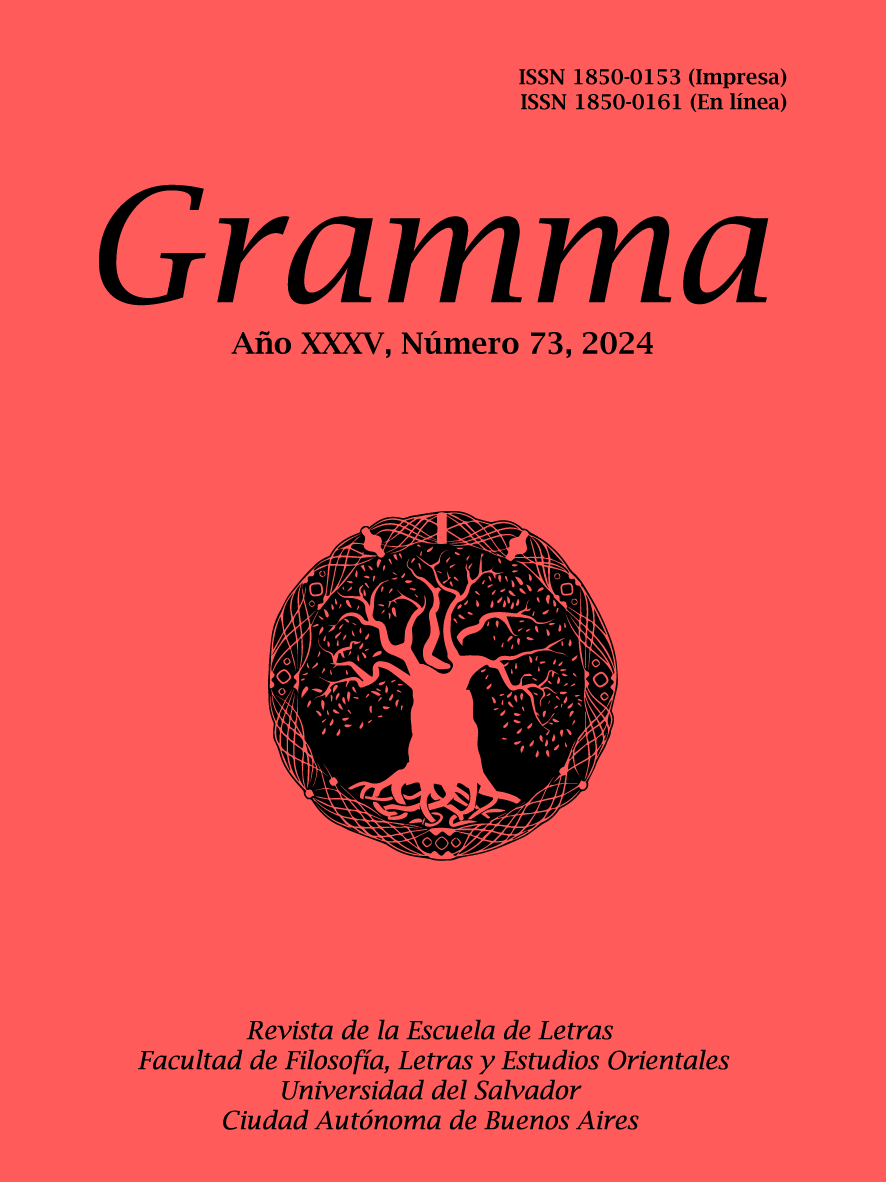An eco-affective imagination for the novel (and for the present)
Keywords:
imagination, narrative, socio-environmentalist, ecoaffectivity, temporalitiesAbstract
In recent years, various scholars from different disciplines have identified and explained that the socioenvironmental crisis currently facing the world has become a permanent condition. Among the new comprehensive tools for both conceptualizing and inhabiting this crisis, the role of the novel is quite a challenge. Also, in recent years, a wide range of contemporary Argentine novels have address, more or less directly, the socio-environmental crisis, ecological collapse, or the threat of the end of the world, alongside others that propose stories in which the main characters change due to their relationship with nature. However, there is another direction I refer to as ecoaffective narrative imagination, which observes a full and reciprocal engagement and a reconfiguration of the self and the environment. Within this framework, I propose reading Gabriela Cabezón Cámara’s latest novel, Las niñas del naranjel (2023), which sets the narrative in the past as a condition of ecoaffectivity through the reworking of the story of Catalina de Erauso, the Monja Alférez, and her memoirs via a complex narrative composition that plays with different times and worldviews.References
Cabezón Cámara, G. (2023). Las niñas del naranjel. Random-House.
Cabezón Cámara, G. (2017). Las aventuras de la China Iron. Random House.
Erauso, C. De (2024). Historia de la Monja Alférez. Banda Propia Editoras. (Trabajo originalmente publicado en 1829).
Friera, S. (2023, 27 de noviembre). Gabriela Cabezón Cámara: «Me interesa explorar otras visiones del mundo». Página/12.
Laera, A. (2023). Por una narración ecoafectiva. Debate Socioambientalismo y feminismos. Mora, 2, 29.
Laera, A. (2024a). ¿Para qué sirve leer novelas? Narrativas del presente y capitalismo. Fondo de Cultura Económica.
Laera, A. (2024b). La novela libra batalla: la imaginación narrativa en tiempos de guerra. Laboratoria, 1.
Latour, B. (2007). Nunca fuimos modernos. Ensayos de antropología simétrica. Siglo XXI.
Merchant, C. (2020). La muerte de la naturaleza. Mujeres, ecología y revolución científica. Comares.
Meruane, L. (2022). Llamadlo Erauso [prólogo a Catalina de Erauso]. Historia de la Monja Alférez. Banda Propia Editoras.
Downloads
Published
How to Cite
Issue
Section
License
Works published in this journal are licensed under a Creative Commons Attribution-NonCommercial-
Works published under this licence may be shared, copied and redistributed in any medium or format. Adaptation, remixing, transformation and creation are also authorised. Both sharing and adapting are permitted as long as credit is given to the work appropriately, providing a link to the licence and indicating whether changes have been made. Commercial use of the material is also not possible.








